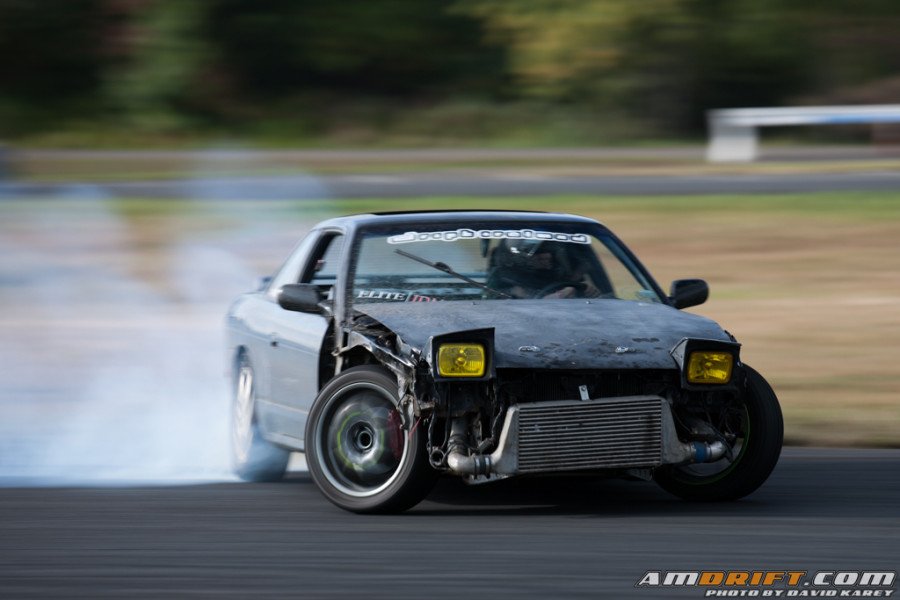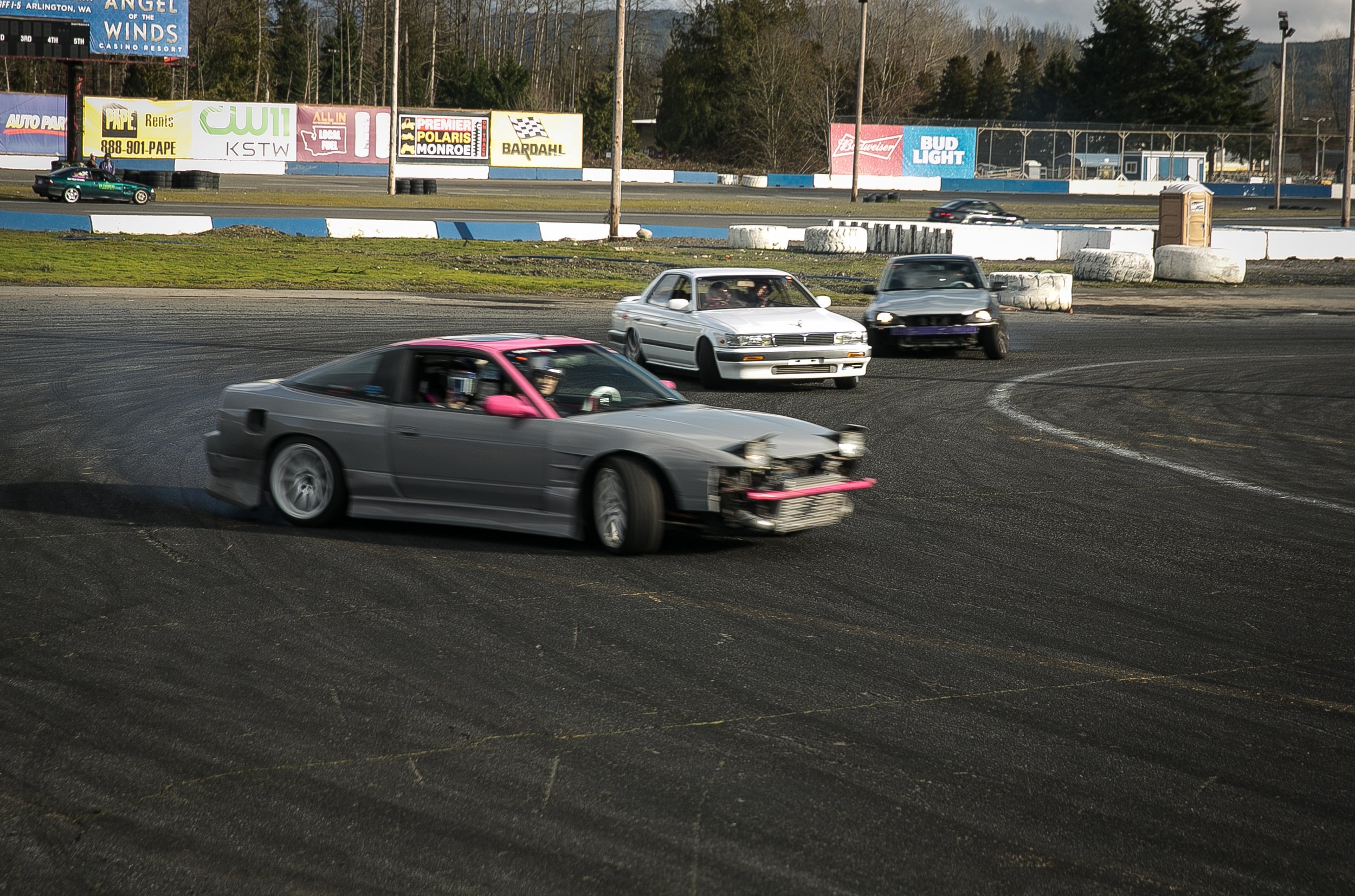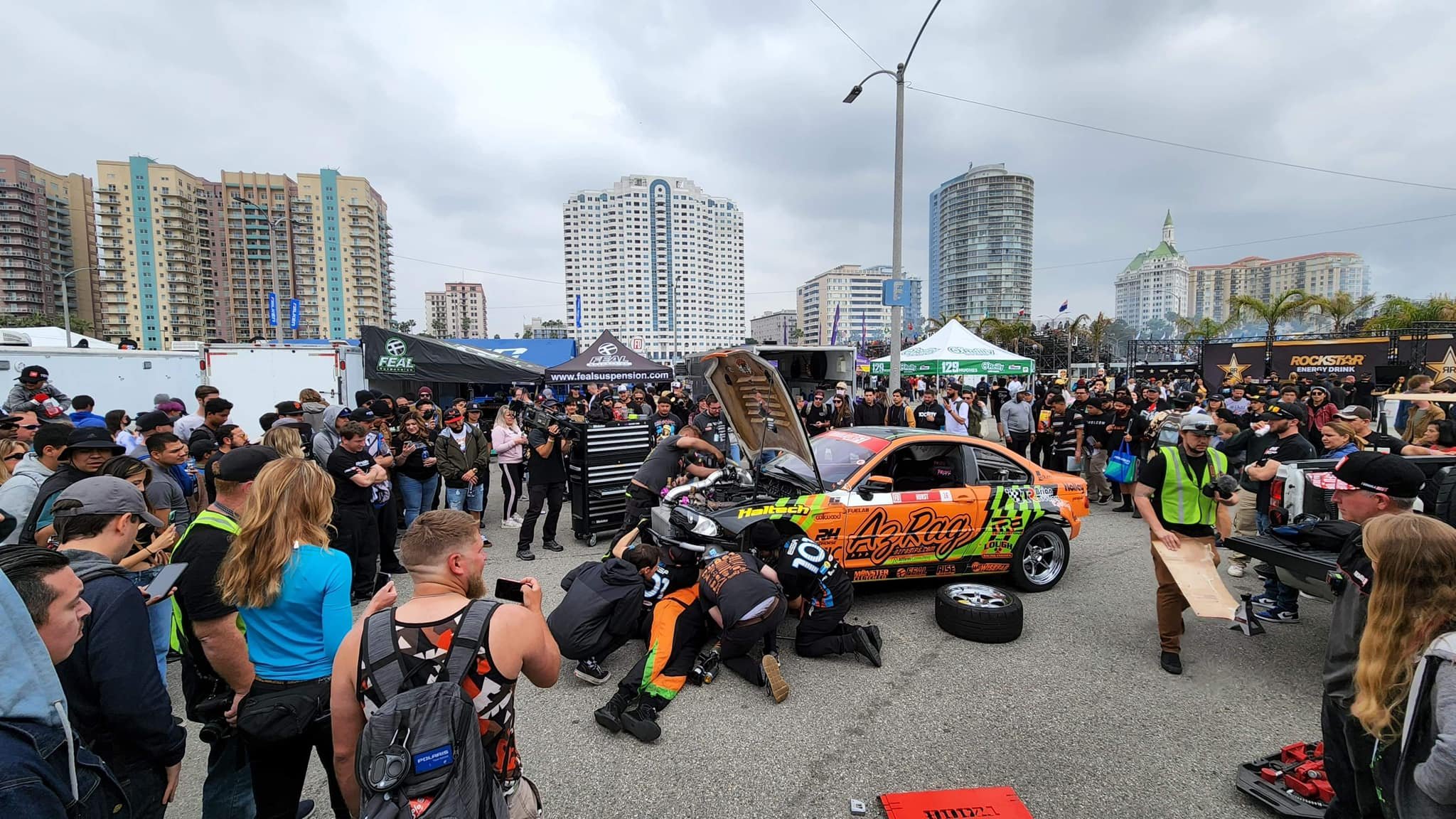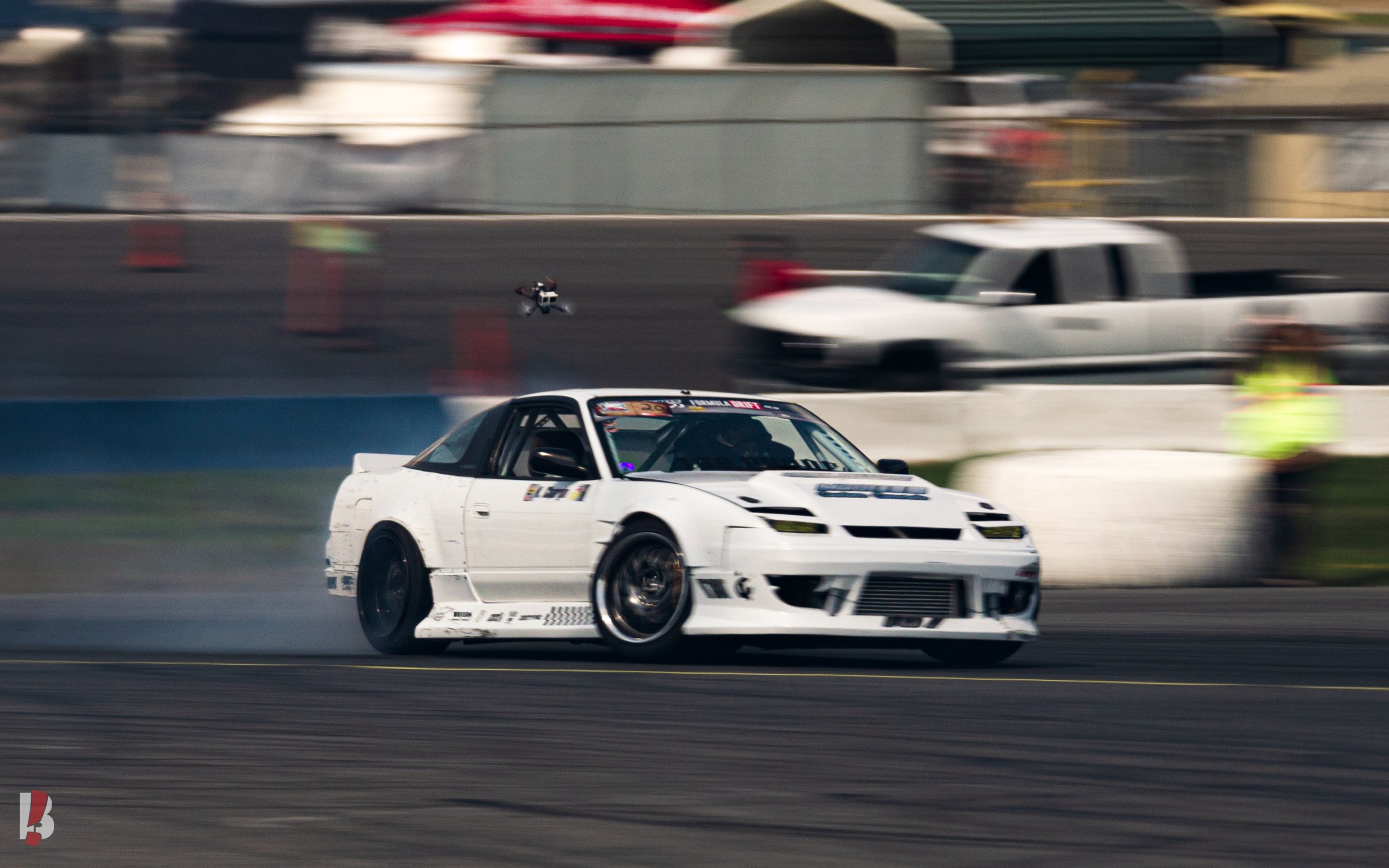CRASHROOTS DRIFTERS
Photo courtesy of David Karey.
We Break It…We Fix It…We Repeat It!
We’ve all seen The Fast And The Furious: Tokyo Drift (hasn’t every drifting fan?)
Some of us might even admit to watching the B+ street-racing flick Need For Speed (at least ten times…lol), along with every other drifting, racing, and fast car movie ever made. We’re the ones anxiously awaiting the release of Fast X, hoping the franchise will bring a little more drifting action back into their plotline.
Even if you’ve only seen a few of the great car movies, it won’t take you long to recognize a running theme. The drivers break and fix their cars nearly as often as they drive them.
So, what gives? Why do competitive drivers - most notably, drifters - live for the inevitable ‘rinse and repeat’ fix and tune cycle? We asked a few folks to weigh in and discovered it all boils down to an attitude. We like to think of it as the ‘crashroots fever’.
Photo courtesy of Larry Chen.
That’s Me! Someday.
About 99.9% of the people introduced to drifting have this thought at some point. And it’s true; it’s very hard to ‘just be the spectator’ when it comes to the sport of drifting cars. Drifting is so incredibly intriguing that nearly everyone who sees a car sliding on a track secretly (or not so secretly) wonders what it feels like to go sideways.
“When I discovered the drifting motorsport at the age of ten, I was absolutely dazed, and my curiosity excelled,” Drift Enthusiast Magazine’s own Justin Fowler admitted in a recent talk. “I'm now 22, and even though I’m already modifying two cars, I still want to get a drift car and into the driving aspect of the sport. I believe it will happen someday soon for me.”
Fortunately for Fowler and others, the open culture of competitive drifting gives anyone with even the faintest desire, a myriad of ways to get into the sport. Aside from the Formula DRIFT (FD) professional circuit - where fans are openly encouraged to get into the pits, look under hoods, interact with drivers, and become an integral part of the pro drifting spirit - a vast number of fan-friendly grassroots and ProAm drifting circuits also exist across the world.
These amateur level programs are even more open and inviting to spectators, with endless opportunities for tapping drivers for a ride-along, picking up helpful tuning tips, or even skidding your car around the track during open drift days.
Fowler noted there are many ways for people to learn about drifting and the drifting culture. “When you’re passionate, you find ways to get involved,” he said, recalling his passion for drifting has led him to explore everything from video games to simulators, and even AWD (all-wheel drive) snow drifting.
“After spending so many hours just watching drifting, I felt like I could do it,” Fowler quipped with a grin. “That’s a joke, but I did gain a lot of valuable knowledge watching normal camera and drone shots, along with studying cockpit and footwell angle footage.”
Photo courtesy of SuiSlide Girls.
A Curiosity That Becomes A Lifestyle.
The bite of the drifting bug goes even deeper with a little track time, and we’ve been told more than once, when an individual gets behind the wheel of a drifting car, they rarely go back to the stands.
“At the end of the day, it’s not just drifting,” said Rylee Winter, a member of the SuiSlide Girls [@Suislide_girls_drift] grassroots drift team. “You start off just watching and then you go for ride-alongs. The next thing you know, you got your own car, and you make it to every open drift to start mastering the skills of drifting.”
According to Winter, it’s easy to spend more and more time learning drifting techniques, looking into different drifting cultures, watching drifting footage on YouTube, and researching everything you can about drifting. “Before you know it, drifting becomes your way of life,” she said. “All it takes is that first time and it will never be your last time.”
Matt Haugness, organizer of the grassroots and pro feeder circuit DriftCon, agrees. He indicated it’s partially the community that hooks a driver on the sport of drifting. “It’s such a strong community and they feel they’re part of it,” he stated. “It’s a lifestyle.”
Image courtesy of Dynosty.
Ohana Truly Means Family In Drifting.
“What makes the drifting culture so fun to be a part [of] is the vibe. Everyone there is family, and they’d give you the shirt off their back,” Winter added. “You break something, and they’re there helping you get it fixed so you can get back out there. There’s no drama and everyone is there to have a good time!”
The sense of family is present everywhere in the sport, whether a driver is just having fun pushing a car through its paces on a grassroots track, or they’re already competing in the FD circuit.
If you caught this year’s FD Long Beach event, you may not have been aware of what was happening behind the scenes, but you pretty much witnessed a classic display of how this family spirit works.
Remember when Jonathan Hurst experienced that unfortunate wall slam? If so, you’ll also remember his unreal race against the clock to get his car repaired before the end of the timeout.
We chatted with Joshua Love’s team manager, Bob, later in the pits and he repainted the scene for us. Proudly, he recounted how members of his team and others were racing back and forth from Hurst’s pit to offer parts, assistance, and anything else he needed to get back on the track. “Helping out is just the way it works in the drifting community,” he stated.
Unfortunately, the clock won that battle. But rest assured, Hurst won’t be giving up anytime soon. The driver, his drifting family, and all his drifting friends worked diligently to get his car in tip-top shape, so Hurst would be ready for the FD Atlanta event.
Because that’s just the way it works in drifting…
Photo courtesy of Drift Enthusiast Magazine.
The Price (and Prize) Of Passion.
Still, you say, how can the draw of a family-oriented culture be enough for drivers to risk the ongoing expense of wrecking – and re-wrecking - their cars (not to mention, the never-ending investment of tires and gas)?
“The hardest part about getting into the drifting motorsport is the financial burden,” Fowler said, but he also admitted this barrier hasn’t stopped him from imagining what it will be like when the time comes. “Have you ever watched an athlete or driver in the leading days to a game or race? They visualize EVERYTHING, and I often catch myself visualizing a track and being in a car, along with what speed to be at upon entry, when to initiate and how, and all the things you do when physically drifting,” he said.
And this same consuming passion is what motivates many drivers to save every non-essential dollar earned, just to spend it on building (and rebuilding) a drift car and embracing the drifting lifestyle. A lifestyle that never fails to fuel (and refuel) the ongoing passion.
According to Gregg Bucell [@gregg.bucell], owner of the Atlanta-based JDM (Japanese Domestic Market) garage and parts company KoruWorks, the social side of drifting is what motivates drivers to put their car on the line. “It’s mostly because we’re doing it with our friends and we’re pushing each other,” he said.
“And, when we do push past the limits, we know we can rely on our friends to be there to put the car on the trailer and come over late nights to help us reassemble it,” Bucell continued. “We’re building families together.”
Photo courtesy of Larry Chen.
A Rare Chance To Have Fun AND Win!
Haugness noted it’s common for grassroots drifters to come and go, as life and family allows, and they can, “safely afford the sport.”
However, the DriftCon organizer has also seen the scales tip the other direction when a driver realizes they have a real chance at winning battles against their peers and taking home a purse.
“There’s usually two distinct trains of thought; either drifting with friends and having fun, or being competitive to win money or move up to driving for FD,” Haugness stated. “People often begin thinking they just want to have fun drifting and then they realize they’re pretty good at it.”
Of course, this is a familiar story for many of the drifting greats. For example, Fredric Aasbo and Amanda Sorensen both developed an itch to drift while competing in their respective local go-kart circuits, RAD Dan Burkett hit the grassroots track in his teens and never looked back, and Chelsey DeNofa got hooked on competitive drifting even before he had an official driver’s license.
The list goes on, but the truth is, even the pro drifters find themselves constantly balancing their pocketbooks against a never-ending passion for getting deeper into the sport.
Formula DRIFT PRO driver, Federico Sceriffo recently told autoevolution.com in an April 2022 video interview that in the sport of drifting, “There is no upper limit when costs are concerned, and that means that it does not matter how much money you have or can get together to race, there will always be something more to spend on.”
In the same talk, Sceriffo paid homage to the grassroots side of the sport, acknowledging the driving is just as physical at the hobby level as it is in pro, which gives him “huge respect” for all the hobby drivers.
Sceriffo also touched on the hidden motivator that drives every drifter to stay involved with the sport. “The taste, the vibe, the energy it gives you at the end,” he said. “It’s priceless and it erases all the struggle that it takes to arrive.”
“At the beginning, it takes so much time, so it looks like you’re in a black hole and you can’t get out of it,” Sceriffo added. “When you think nothing is coming; that’s the moment when things are coming, if you keep tight.”
Photo courtesy of Christian Buenaventura
Because Drifting Never Gets Old.
And we all know, ‘keeping it tight’ is what every drifter does best! So, it doesn’t matter if a driver is having fun at the grassroots level, fighting for a license, or competing at the top of the pro circuit, it’s the challenge of pushing their car well beyond its normal limits that makes drifting so intriguing, intimate, and intoxicating.
“They don’t say rip, break, fix, repeat for no reason,” Winter said. “You got to remember, we are out driving cars in a way they’re not meant to drive, and eventually no matter what, something will break.”
And while the cycle of repetitively breaking and fixing a car might seem daunting (or even over-the-top) to many, it’s just a way of life for a committed drifter.
“When it does [break], we will fix it, and get right back out there,” Winter aptly concluded, confirming that the sacrifice is worth every penny and ounce of time invested, because it’s what keeps them doing what they love in a like-minded community of real friends and family.
And that’s why we love it here at Drift Enthusiast Magazine too! We hope you’ll take the ride with us as we Drift EM and put our crashroots fever into ALL THINGS DRIFT.







